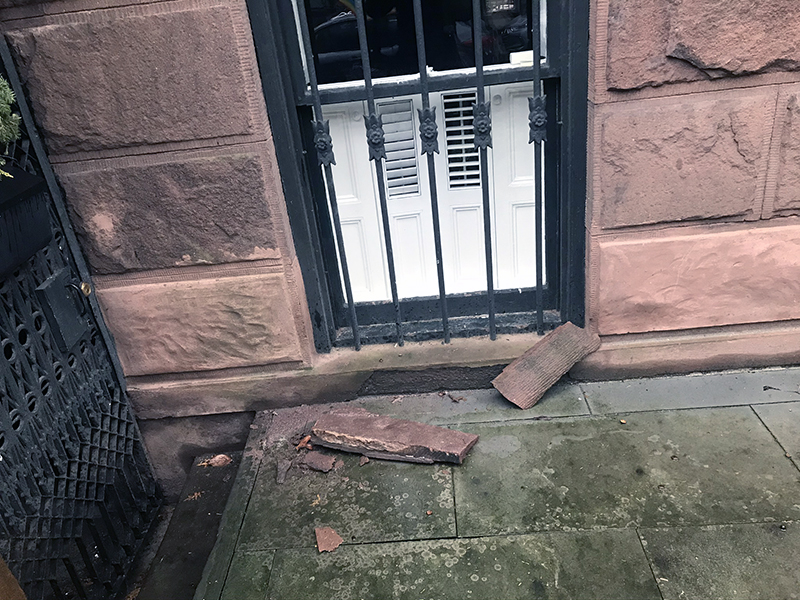Follow BHA project manager Anita Lin’s journey as she restores the brownstone facade of her Park Slope townhouse.

When I bought my house 9 years ago, I anticipated that I would eventually replace the brownstone façade one day in the future, but didn’t think that it would be any time soon. From a distance, the brownstone looked pretty good, but upon closer inspection, you could see the outlines of large areas that were patched by previous owners. The patches had a pinkish tint that did not match the rest of the original brownstone color. While the patchiness didn’t look very good, it seemed like just an aesthetic issue that I could live with. While some of the brownstone details were chipped or flaking off, I didn’t think there any larger structural issues that needed to be addressed.

This brownstone façade restoration project became real when I came home on a rainy afternoon to find that a chunk of brownstone from the second floor window sill above had broken off. Brooklyn builders of the late 1800s liked to use brownstone because the quarries were close by and it was an easy material to carve. However, they quickly learned that brownstone was a poor building material that did not hold up well over time. Because brownstone is layered and porous, it is greatly impacted by the effects of the freezing and thawing cycle. Brooklyn, with its wet winters and wide temperature fluctuations is not hospitable to brownstone as a building material. Once water enters into the crevices of the brownstone through joints and cracks, the water expands when it freezes. The pressure of this expansion pushing out destroys the structural integrity of the stone from within. The deterioration from within is hard to detect from the outside, so I was completely taken by surprise when a part of my window sill fell off. It makes sense that the window sill turned out to be the weak spot because of its exposed horizontal surface. The chuck of brownstone that broke off fell exactly on the spot where a mailman would stand to deposit mail into the mailbox hanging on the gate. For me, repairing the brownstone became a safety issue and was no longer just an aesthetic issue.
